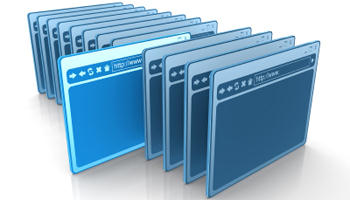

A content management system (CMS) is a computer program that allows publishing, editing and modifying content on a website as well as maintenance from a central page.
It provides procedures to manage workflow in a collaborative environment. These procedures can be manual steps or automated cascade. These changes can be modified by a web designer or the owner of a website.
Typically the CMS system is used for Adding or amending:
- Text and copy
- Images including photography and videos
- Stock items and prices
- Social networking links
- Links to external sources
- Client testimonials and reviews
- Your companys portfolio
- Latest blog posts
- Contact details
- Frequently asked questions
- Career opportunities
- Press releases
- Terms and condition changes
- SEO Implementation
- Integration of payment platforms, including all major credit cards, PayPal and Sagepay etc
Our clients find the CMS system very useful which allows them to make fundamental changes to their websites.
A more in-depth explanation of how the CMS works:
As you can see web content management system is used to control a dynamic collection of web material, including HTML documents, images, and other forms of media. The CMS facilitates document control, auditing, editing, and timeline management. A CMS typically has the following features:
Automated templates
Create standard output templates (usually HTML and XML) that can be automatically applied to new and existing content, allowing the appearance of all content to be changed from one central place.
Access control
Some WCMS systems support user groups. User groups allow you to control how registered users interact with the site. A page on the site can be restricted to one or more groups. This means an anonymous user (someone not logged on), or a logged on user who is not a member of the group a page is restricted to, will be denied access to the page.
Scalable expansion
Available in most modern WCMSs is the ability to expand a single implementation (one installation on one server) across multiple domains, depending on the servers settings. WCMS sites may be able to create micro sites/web portals within a main site as well.
Easily editable content
Once content is separated from the visual presentation of a site, it usually becomes much easier and quicker to edit and manipulate. Most WCMS software includes WYSIWYG editing tools allowing non-technical users to create and edit content.
Scalable feature sets
Most WCMS software includes plug-ins or modules that can be easily installed to extend an existing sites functionality.
Web standards upgrades
Active WCMS software usually receives regular updates that include new feature sets and keep the system up to current web standards.
Workflow management
Workflow is the process of creating cycles of sequential and parallel tasks that must be accomplished in the CMS. For example, one or many content creators can submit a story, but it is not published until the copy editor cleans it up and the editor-in-chief approves it.
Collaboration
CMS software may act as a collaboration platform allowing content to be retrieved and worked on by one or many authorized users. Changes can be tracked and authorized for publication or ignored reverting to old versions. Other advanced forms of collaboration allow multiple users to modify (or comment) a page at the same time in a collaboration session.
Delegation
Some CMS software allows for various user groups to have limited privileges over specific content on the website, spreading out the responsibility of content management.
Document management
CMS software may provide a means of collaboratively managing the life cycle of a document from initial creation time, through revisions, publication, archive, and document destruction.
Content virtualization
CMS software may provide a means of allowing each user to work within a virtual copy of the entire web site, document set, and/or code base. This enables changes to multiple interdependent resources to be viewed and/or executed in-context prior to submission.
Content syndication
CMS software often assists in content distribution by generating RSS and Atom data feeds to other systems. They may also e-mail users when updates are available as part of the workflow process.
Multilingual
The Ability to display content in multiple languages.
Versioning
Like document management systems, CMS software may allow the process of versioning by which pages are checked in or out of the WCMS, allowing authorized editors to retrieve previous versions and to continue work from a selected point. Versioning is useful for content that changes over time and requires updating, but it may be necessary to go back to or reference a previous copy.
At Safetech Design we offer a full maintenance service where we make any changes and additions to clients websites to ensure it is current and fully up to date; however we understand that some of our clients like to amend and make changes to their own websites. The platform that allows our clients to do this is called a Content Management System (CMS). The CMS system that we provide is very user friendly and allows our clients to make changes to their websites via a very secure password protected control panel. The CMS system is very versatile and will allow you to make changes to your website from anywhere in the world. There are no set up fees for the CMS system and access is entirely free of charge.
08448707152
info@safetechdesign.co.uk
http://www.safetechdesign.co.uk
Safetech Design
Safetech Design Ltd





As we cannot be experts in every relevant subject, we would love to receive 'guest' articles that may be of interest to anyone running their own business or thinking of doing so. ADD YOUR ARTICLE